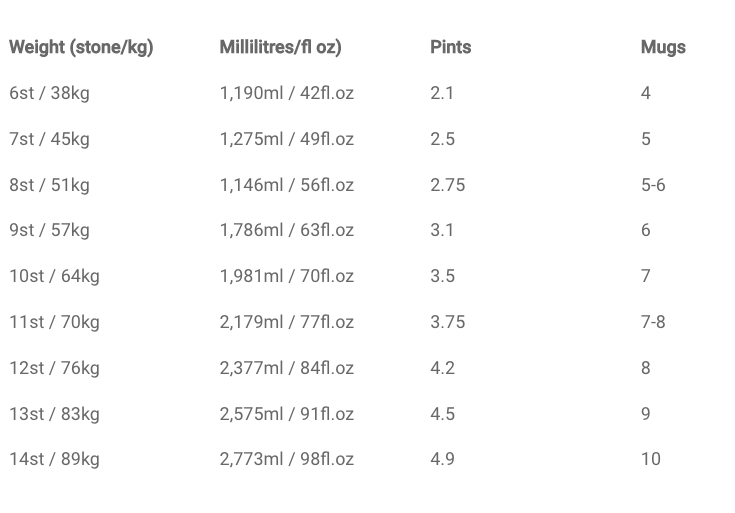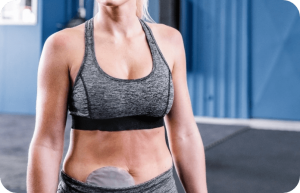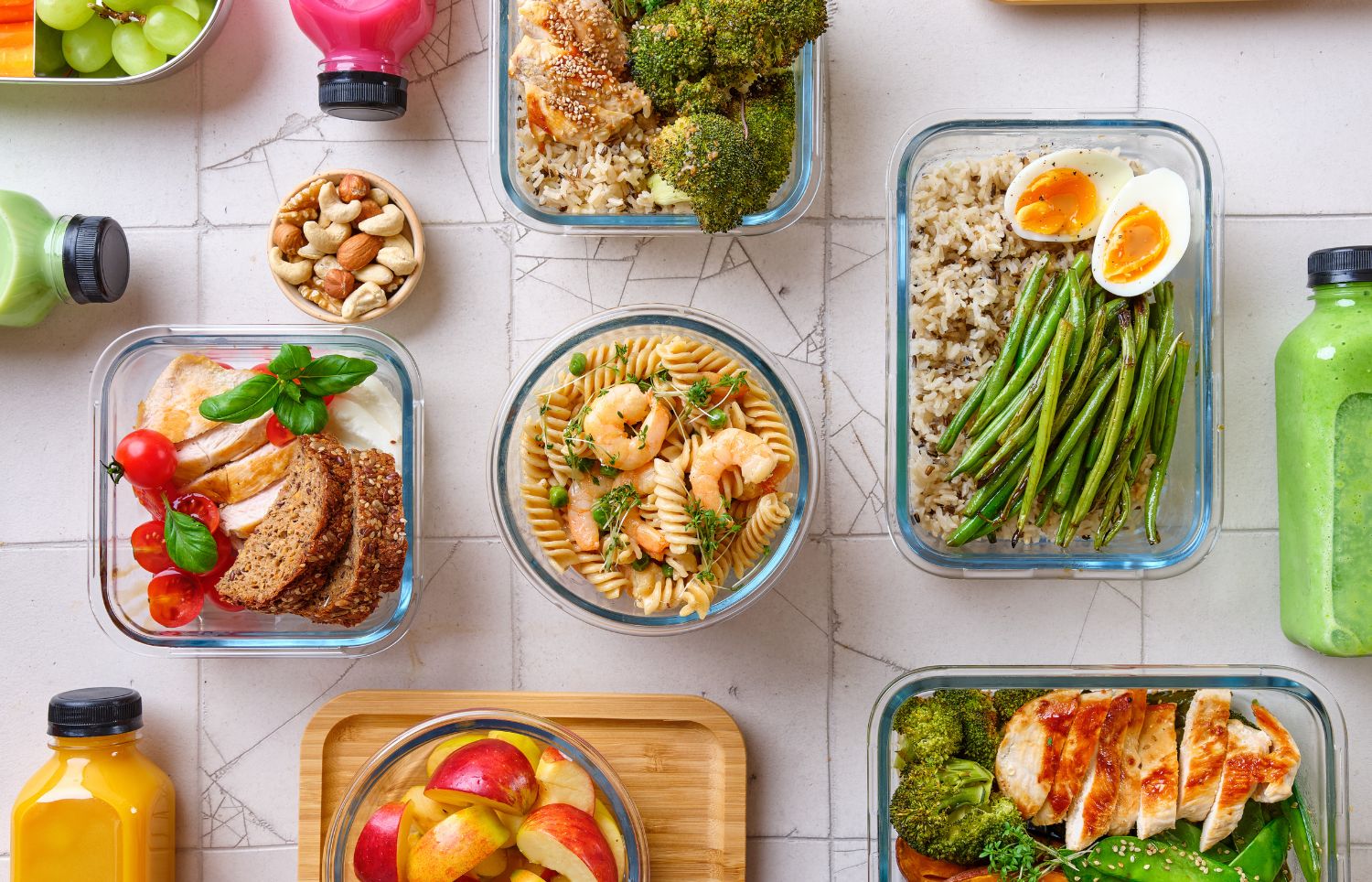If you’re actively trying to increase your fluid intake and hydration levels, it may help to have a goal in mind that suits your body. This table can help you determine how much fluid you should try to take in a 24 hour period based on your weight. This is purely a guideline and applies to body frame and activity levels should be taken into consideration i.e. those partaking in vigorous exercise should drink more fluids.
For more information and for fluid charts, please download our Catheter Guide.
Fluid Chart by Bodyweight

Weight (stone/kg)
6st / 38kg
7st / 45kg
8st / 51kg
9st / 57kg
10st / 64kg
11st / 70kg
12st / 76kg
13st / 83kg
14st / 89kg
Millilitres/fl oz)
1,190ml / 42fl.oz
1,275ml / 49fl.oz
1,146ml / 56fl.oz
1,786ml / 63fl.oz
1,981ml / 70fl.oz
2,179ml / 77fl.oz
2,377ml / 84fl.oz
2,575ml / 91fl.oz
2,773ml / 98fl.oz
Pints
2.1
2.5
2.75
3.1
3.5
3.75
4.2
4.5
4.9
Mugs
4
5
5-6
6
7
7-8
8
9
10
You can find more information about how to increase your fluid intake in our article on the importance of hydration. This offers tips around what and when to drink, to help you remain hydrated during the day.
Catheter Guide
[BBC:056] Catheter Care
Catheters are used to drain urine away from the bladder. This booklet details types of catheters commonly used and how to take care of them to avoid infection and complication.










